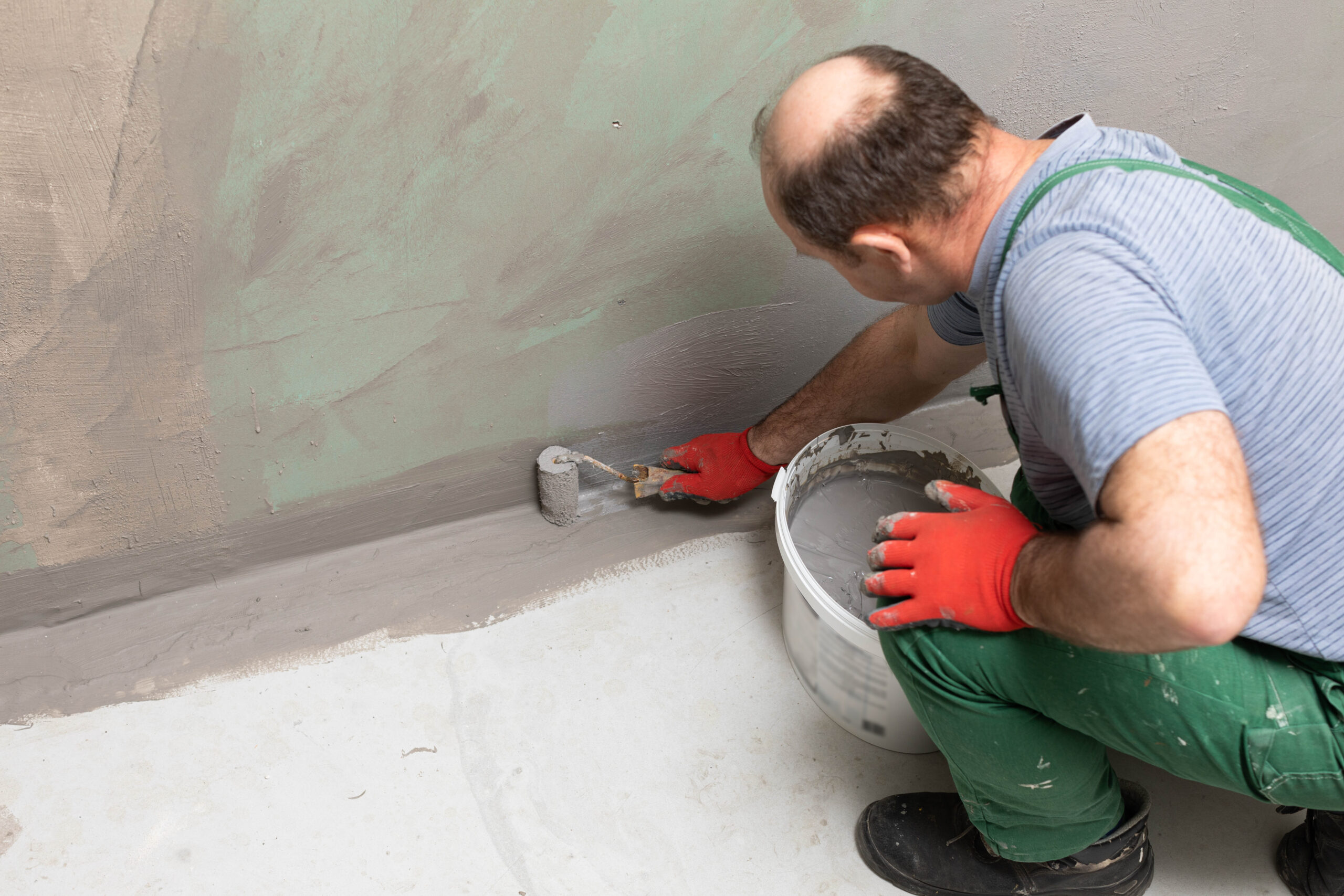
Bathroom renovation. Construction worker. Mineral moisture insulation. During work.
Are you a homeowner facing the potential risks of basement water damage? With basements often being one of the most vulnerable areas in any home when it comes to water, it’s essential to make sure your basement is properly waterproofed. In this comprehensive guide, we’ll be covering all the important topics related to basement waterproofing that every homeowner should know, from identifying signs and causes of leakage to preventative measures and solutions you can put into place. No matter what your level of expertise or experience on the subject may be, keep reading as our experts break down everything there is to know about how to waterproof your basement successfully!
Understanding the Basics of Basement Waterproofing
Basement waterproofing is a critical aspect of home maintenance, as it helps prevent water damage and the growth of mold and mildew. Understanding the basics of waterproofing can save you a lot of time, money, and stress in the long run. Generally, the process involves a combination of sealing cracks and gaps in the foundation walls and floors, installing drain tiles and a sump pump, and applying a waterproof coating. It’s important to note that basement waterproofing is not a one-size-fits-all solution and should be tailored to your specific needs and circumstances. Whether you’re planning to complete the waterproofing work yourself or hire a professional, equipping yourself with knowledge can help ensure the job is done right and your basement remains dry and safe.
The Different Types of Basement Waterproofing Solutions
There’s no one-size-fits-all solution when it comes to keeping your basement dry. The truth is, there are a variety of effective ways to waterproof your basement, each with its pros and cons. For example, there’s interior waterproofing, which involves installing a drainage system on the inside of your basement walls to direct water away from your home. On the other hand, exterior waterproofing requires excavating around your foundation and applying a waterproof coating and other protective measures to keep water out. Another option is the installation of a sump pump, which helps prevent flooding by pumping water out of your basement. Whatever solution you choose, it’s important to work with a professional who can help you determine the right approach for your home’s unique needs.
How to Choose the Right Waterproofing Solution for Your Home
Having the right waterproofing solution for your home is essential for protecting it from water damage. When choosing a waterproofing solution, you should consider factors such as the location of your home, the extent of water exposure, and your budget. Some popular waterproofing solutions include waterproof paint, sealants, and membranes. Waterproof paint is a cost-effective solution that can provide a barrier against water, but it is not recommended for areas with heavy water exposure. Sealants, on the other hand, offer long-term protection against water and are suitable for areas such as foundations and roofs. Membranes are a more expensive option but provide the highest level of protection against water damage. Whichever solution you choose, make sure that it is suitable for your home’s unique needs, and consult with a professional to ensure proper installation.
DIY vs Professional Installation of Basement Waterproofing Systems
Basements are an important part of any home, providing additional storage, living space, and even entertainment areas. However, this space is also highly vulnerable to moisture and water damage, making waterproofing systems a vital investment for homeowners. The question then arises – should one opt for a DIY approach or hire a professional for this project? While DIY waterproofing solutions may seem initially cost-effective, they often lack the expertise and quality materials required for effective and long-lasting waterproofing. Professional installation teams bring valuable experience, industry-recognized products, and technical know-how to the job, ensuring comprehensive protection against water damage and peace of mind for homeowners. Ultimately, it is important to choose a solution that fits your needs, budget, and long-term goals.
Maintenance Tips for Effective Basement Waterproofing Results
Having a waterproof basement is essential to maintaining a safe and dry living space. To ensure that your waterproofing efforts are successful, it is important to maintain the system you have in place properly. Regular cleaning and inspections of gutters, downspouts, and drainage systems are crucial to preventing water damage. Additionally, check for cracks in the foundation and walls and repair them promptly to prevent any leaks. Consider investing in a sump pump system to remove any excess water and keep your basement dry. By regularly maintaining your waterproofing system, you can ensure its effectiveness and prevent costly damages in the long run.
Overall, waterproofing your home is an important investment that shouldn’t be taken lightly. Basement waterproofing can save you a lot of time and money, and it’s the best way to guarantee the longevity of your home. It’s important to take into consideration all of the different aspects involved in basement waterproofing: understanding and researching the basics, learning and considering various types of solutions, determining how best to proceed with the installation (DIY vs professional), and lastly, performing basic maintenance so that your system is always effective. After all, has been said and done, it is up to each homeowner to decide which type of basement waterproofing best fits their budget and goals for their home; everyone is unique and must weigh these factors differently. If you have any more questions about basement waterproofing or would like some assistance figuring out which type would be best for you, feel free to reach out to a local expert for help. They can provide personalized advice so that you can make an informed decision for your individual needs.


